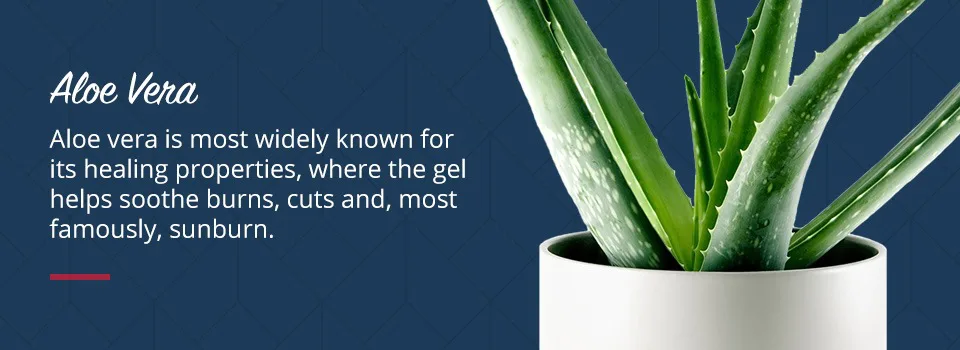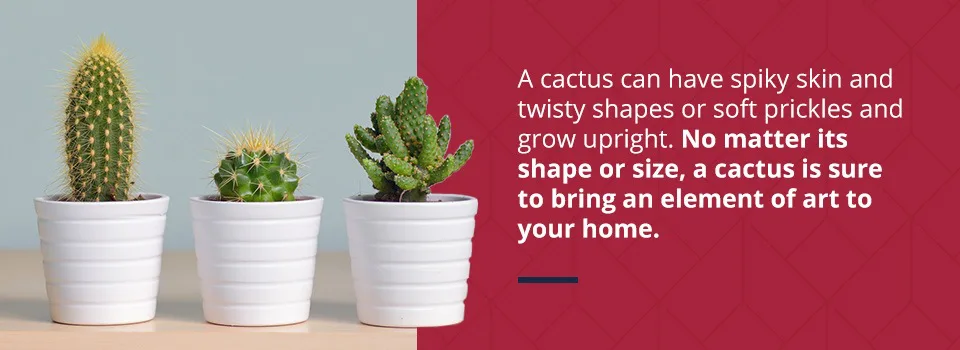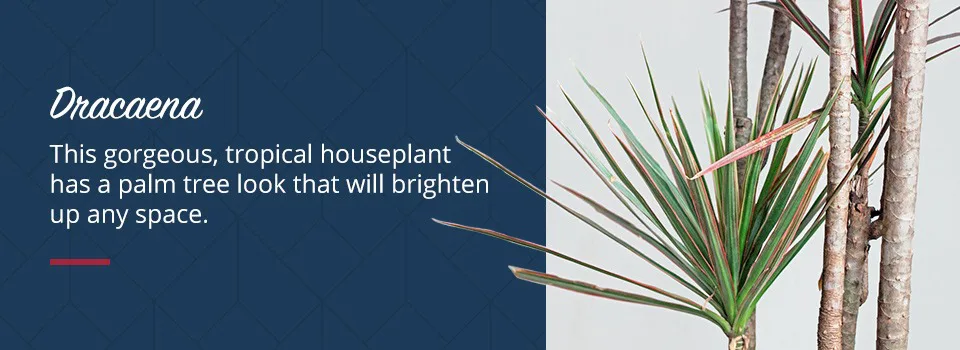
Plants add ambiance to a home, serving as unique natural décor and making the home feel cozier. And beyond just looking pretty, plants also come with some notable health benefits. By trapping toxins and pollutants and producing oxygen, plants contribute to a healthier indoor air quality, which in turn is helpful for respiratory issues and allergies, preventing illness and boosting overall health. With all these numerous benefits, it’s no wonder so many people enjoy having a bit of greenery in their homes.
These advantages may be even more essential for apartment dwellers, who usually don’t have much outside space, if any. Houseplants are a great way to bring the outdoors in and brighten up your apartment. When you don’t have a yard or garden of your own, houseplants can help satisfy the urge for gardening and enjoying nature.
Depending on the size and style of apartment, this type of living can come with some challenges for successfully growing plants indoors, like smaller living spaces and limited windows. For this reason, not all plants are ideal for apartments. You’ll want to choose plants for small spaces, and varieties that are easier to take care of. Lower-maintenance plants don’t require much beyond regular watering and an occasional boost of fertilizer, and bounce back quickly if you miss a watering.
Here are some other tips on characteristics to look for when choosing great apartment plants:
With a little research, you can find great plants to enhance your apartment — even if you don’t have the greenest of thumbs. Check out our list of the 10 best plants for your apartment.

Aloe vera is a small indoor plant that has plump leaves fanning from the center of its base. It is most widely known for its healing properties, where the gel helps soothe burns, cuts and, most famously, sunburn. Succulents have been enjoying a moment of wild popularity lately, and aloe plants are among the hardiest and easiest to take care of. These fun, unique-looking plants add lots of style to a small space, and you can use them for skin care and first aid as they grow. The plant will also produce offshoots, called pups, when it is healthy. You can remove the pups and replant them to start another new aloe plant.
Tips: You should avoid frequent watering when caring for an aloe plant and water it less during the winter. Let the soil completely dry between watering as well. You can keep an aloe vera plant at room temperatures around 70 degrees, surrounded by lots of sunlight.
If you’re just starting to learn how to keep apartment plants alive, a pothos is perfect for beginners. As a fast-growing plant, it is quite undemanding and thrives on little attention. The low-maintenance houseplant can grow up to eight feet long — but don’t worry, a simple trimming of the leaves will keep the plant plump and healthy. Because of its ability to reach long lengths, it lives well in a hanging basket.
Like many indoor plants, a pothos plant can absorb toxins in the air. Although it may prove to be beneficial in many ways, you should never ingest pothos, as it’s extremely poisonous. So, be sure to keep pets or young children away from these plants. You can grow this beneficial greenery almost anywhere, and it is ideal for apartment living due to its low light requirements and ease of care.
Tips: A pothos plant can adapt to an array of temperatures and light conditions, but be sure to avoid direct sunlight. This particular plant can also survive without potting soil. A pothos can grow in a pot of soil or thrive in a vase of water, as long as you keep the vessel filled consistently. Similar to an aloe vera plant, cuttings from a pothos plant are easy to propagate. Generally, though, you should keep the new plants in either soil or water, as they may not easily make the transition back and forth. Keep the plant trimmed to keep it looking healthy, and use your cuttings to add fullness to your original plant.
The philodendron is easy to confuse with pothos because of its similar heart-shaped leaves. It, too, is a fast-growing plant where the stems can trail over the edges of furniture. And like the pothos, you can trim the philodendron to keep it at your desired length.
Philodendrons are so easy to take care of that you might have heard people say it’s harder to kill them than to keep them alive. As an ideal plant for apartment life, their beautiful, heart-shaped leaves and trailing vines work great in a hanging basket or on a high shelf, or keep them trimmed for a bushier appearance. They are also easy to propagate through cuttings.
Tips: The durable foliage of the philodendron adapts to low light conditions and prefers room temperatures. For watering tips, make sure the soil surface is dry before each rehydration. This plant is toxic, so keep leaves away from pets and children.
As one of the best indoor plants to grow in an apartment, a snake plant tolerates neglect well and is essentially indestructible. You might also hear snake plants called “mother-in-law’s tongue” because of their sharp, pointy leaves and their extreme hardiness. With sword-shaped, thick, waxy leaves, a snake plant can have a variety of yellow to white leaf edges that grow upright. The thick leaves almost look artificial, give an architectural element to any room and are great at filtering air.
Tips: A snake plant grows in a range of light conditions with dry air and soil. Because it thrives on neglect, the snake plant is one of the lowest-maintenance houseplants you can get.
Bromeliads are one of the best indoor plants to bring life to your home. With their exotic, colorful foliage, you might assume this tropical plant would be high-maintenance or challenging to take care of indoors, but bromeliads are quite easy and rewarding to care for. This unique plant can grow as an air plant, or in a pot of soil. The leaves of this beautiful plant grow in a circular, rosette shape and may produce a large, brightly colored flower, adding a lovely touch to your décor.
Tips: This vibrant and textured houseplant requires medium to bright light conditions. While it does well in shallow soil, you must be sure to keep the roots fully covered. To water the bromeliad plant, fill the “cup” at the base of the leaves.

If you often forget to water your indoor plants, consider caring for a cactus in your home. A cactus is one of the easiest indoor plants to grow because it has few demands of plant owners. Of course, there is not one specific species of cactus, but you can do no wrong, no matter which you choose. A cactus can have spiky skin and twisty shapes or soft prickles and grow upright. No matter its shape or size, a cactus is sure to bring an element of art to your home.
Tips: A cactus requires full sunlight and occasional watering about every 10 days. During the winter, watering a cactus plant once a month is sufficient. You should “air out” your cactus during the growing seasons of spring and summer. Instead of using soil, a cactus plant prefers a sand or limestone mixture to represent the qualities of a desert. Two common cactus plants are the flapjack and candelabra tree.
The jade plant is one of the few houseplants that grow slowly and can survive for decades, making them a great plant for apartment life. The jade plant is a variety of succulent plants, requiring little water and care and growing well in a warm home environment. Older jade plants can have woody, gnarly branches and stems, making them look like miniature trees and adding tons of decorative charm to your space. Consider pairing them with other small indoor plants and succulents to add an element of variety.
Tips: This voluptuous, but small, indoor plant needs dry soil conditions with little water. The jade plant lives well in bright sunlight and room temperatures.
Don’t let the word “tree” intimidate you. Although the rubber tree can reach a height of eight feet, you can easily keep it more manageable and apartment-sized by trimming it to the size you want. Prune the plant as desired, or let it grow into a lovely indoor tree. Either way, this plant adds lots of character to a home and is easy to care for. Also called a rubber plant, ficus or fig tree, the rubber plant gets its name from the sticky sap it oozes when injured. Its large, shiny green leaves create a pop of color in any room.
Tips: The rubber tree requires dry soil between watering sessions. While it thrives in medium to bright sunlight, it can also thrive in dim lighting areas and cooler climates.
The peace lily is one of the easiest plants to grow inside your home. Also known as the “closet plant,” the peace lily stays true to its name. With its white blooms and dark, contrasting leaves, the lily gives off a sense of relaxation and even reduces airborne toxins. While many people believe the white blooms are flowers, they are specialized leaf bracts that enclose the flower. Because the peace lily grows broad leaves, dust can quickly pile up. Dust the leaves with a damp cloth or run water over them to clean.
Tips: As a low-maintenance houseplant, the peace lily thrives in the shade with cooler temperatures. Low humidity is essential for the plant while maintaining moist soil. A common mistake among plant owners is to overwater the plant. Be aware of this, as it may cause root decay. While the peace lily can thrive in the shade, it can also tolerate large amounts of sunlight. The more sunlight, the more the white blooms will appear.

This gorgeous, tropical houseplant has a palm tree look that will brighten up any space. There are more than 40 varieties of dracaena, also called corn plants or dragon plants, but all of them feature spiky foliage bursting from a woody stalk, or cane. These stalks can grow as tall as six to eight feet, or you can choose to prune them shorter for a smaller space. New leaves will sprout from the top of the stalk wherever you trim it. In many cases, planting several stalks will form a fuller look.
Tips: Dracaena needs medium to bright light and dry/moist soil between watering sessions. The plants are poisonous to pets, so keep them out of reach. Otherwise, dracaena are exceptionally easy to take care of and an excellent choice for an apartment.
Choose any of the plants from this list, and you’re off to an excellent start on how to keep indoor plants alive. All of these plants are hardy and easy to take care of, ensuring your apartment will have long-lasting, beautiful greenery to brighten up your home and improve your air quality. With any plant, you should be aware of these care basics.
Now that you know all about caring for indoor plants — and the best plants to try in your home — it’s time to try your hand at caring for indoor plants. If you’re searching for a new home for you and your plants, Triple Crown Corporation has rental communities just right for you. Whether you are interested in an apartment or townhome, we’ve got what you’re looking for. Check out all our available rental communities and find your next home with Triple Crown!